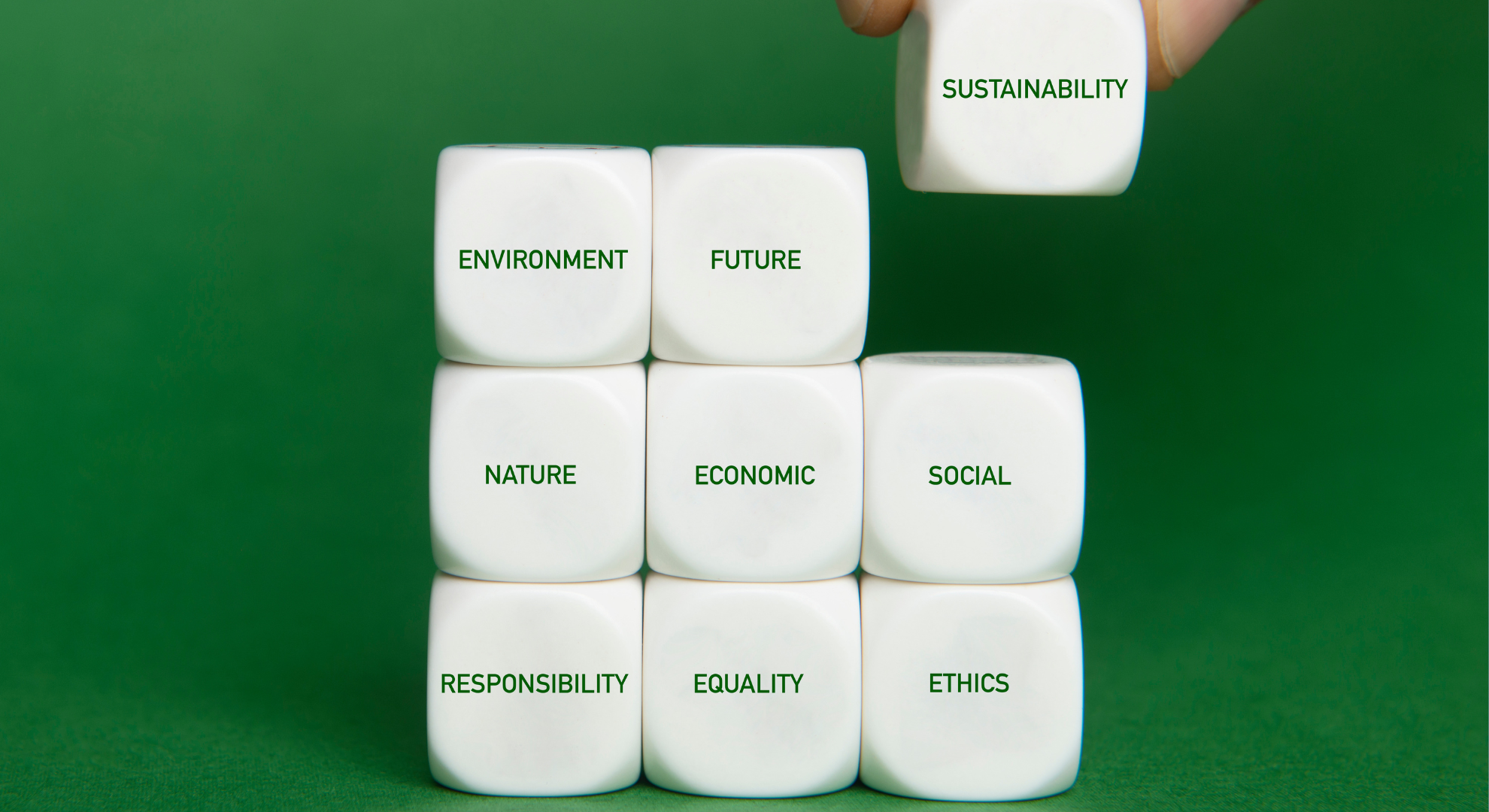The carbon disclosure project is a global disclosure framework that assesses companies on their greenhouse gas emissions, as well as their plans for reducing those emissions.
Companies have to answer an annual questionnaire about their emissions and actions taken to reduce them. The CDP questionnaire is mainly used by investors and corporate clients to evaluate the risk of climate change-related issues for a company.
What is the Carbon Disclosure Project?
Definition
The Carbon Disclosure Project (CDP) is an extra-financial questionnaire that collects data on companies’ environmental practices and performance, which serves as a reporting standard on environmental topics.
CDP gives a score that confers a total ESG rating for the subjected enterprises to assess their environmental impact.
In order to shed some clarity on CDP’s particularities, it is worth exploring the following definitions of the aforementioned key concepts:
- Questionnaires = Collect information on a company's ESG policies, processes, metrics, and performance.
- Standard = Standards are a set of specific, replicable, and detailed guidance for what should be disclosed.
- ESG Rating = Rates companies based on their ESG policies, systems and measures, and it can be performance-based or risk-based rating.
What does CDP stand for?
Climate change, water management, and deforestation all became persistent issues for businesses worldwide.
In order to tackle these challenges, Environment, Social & Governance (ESG) reporting represents a viable option for various stakeholders to ascertain their impact on their surroundings and to be held accountable.
ESG reporting is the process through which a firm discloses information about its activities in three key areas: environmental, social, and corporate governance.
CDP emerged as a pioneer in the area of ESG reporting at the beginning of the 21st century.
CDP is a not-for-profit organization that administers the worldwide disclosure system used by investors, businesses, cities, governments, and regions to manage their environmental effects.
CDP surveys assist the business sector in successfully communicating their strategy for quantifying emissions and managing the risks and opportunities connected with climate change’s consequences.
In other words, CDP is a tool that businesses may use to develop their climate plan and benchmark themselves against other businesses in their industry, even on an international level.
CDP was established in 2000, building on The Global Reporting Initiative’s (GRI) idea of environmental disclosure, focused on individual corporations rather than states. GRI-compliant reporting is geared at stakeholders and provides a framework for evaluating an organization’s economic, environmental, and social performance.
In comparison, CDP reporting is more investor-focused, supporting the aggregation of information on climate change risks and possibilities, as well as statistics on emissions reduction, business measures to mitigate climate change and minimize environmental impact, and so on.
CDP Today
In 2021, a record number of firms of more than 13,000 submitted environmental data to CDP, marking a 37% increase in the number of organizations sharing information since 2020 across the three surveys. These corporations account for more than 64% of market capitalisation.
CDP’s A List of environmental leaders includes just 2% of the world’s Fortune 500 businesses, with a combined market capitalization of $12 trillion.
However, approximately 17,000 companies with a combined value of $21 trillion continue to withhold information.
Another prominent occurrence for CDP in 2021 was the publication of CDP’s five-year strategy. Overall, CDP aims to strengthen the involvement, monitoring, and analysis across a diverse collection of stakeholders, broaden their coverage to include additional environmental challenges, and emphasize concrete objectives, plans, and performance.
Moving forward, the guidance for CDP reporting in 2022 has been issued, and the response platform will be accessible in early April.
CDP has enacted many significant revisions to the questionnaires for 2022, such as extended governance questions to determine the competencies in managing climate, water, and forest risks as well as more emphasis on biodiversity.
Moreover, the questionnaire will elicit detailed information on transition strategies and the existing and forecast capital expenditures and operating expenses necessary to achieve net-zero emissions by 2050.
How does CDP work?
CDP implications for Businesses
Following the United Nations Climate Change Conference from November 2021, there is growing pressure on businesses, financial institutions, and investors to live up to their Glasgow obligations.
Environmental regulations are becoming more stringent, and governments require companies to align their operations with national and international sustainability goals.
In addition, consumers are becoming more conscious of their environmental impact. When it comes to the products and services consumers purchase, they expect transparency and rigor.
Hence, CDP represents the perfect opportunity for companies willing to meet contemporary sustainability standards and set carbon targets and action plans.
Moreover, the information encompassed by the CDP is essential for businesses since institutional investors utilize publicly available data to drive their decision-making, and large firms use it to analyze and interact with their supply chain.
Beyond innovation, companies must identify hidden opportunities within the risks posed by climate change. These risks may be transformed into opportunities for the company and incorporated into their fundamental strategy.
For instance, CDP includes a question on how respondents transformed challenges into feasible business opportunities as part of the questionnaire.
Therefore, businesses must understand whether particular hazards associated with climate change might have a meaningful impact on their operations, how big of an impact this would have on their bottom line, and what efforts must be made to avert these risks in the first place.
Advantages of CDP
CDP brings forward a plethora of advantages for the enterprises, such as the following:
- Promote more openness - Improved disclosure and reporting of the financial risks and possibilities associated with climate change would help businesses' relationships with investors, stakeholders, and the general public. They foster trust by being open and transparent, and in the process, they safeguard the company's long-term survival.
- Risk Management - Enterprises that respond to CDP, demonstrate unequivocally that their business is a forward-thinking, long-term sustainable enterprise. By implementing the guidelines, businesses may become more robust to the physical and transitional risks of climate change. Companies that invest in assessing and comprehending climate-related risks and possibilities will be able to make more informed business choices in the future, facilitating a fair and orderly market transition to a low-carbon economy.
- Indicator of commitment - By signing the CDP pledge, these firms demonstrate that they understand the economic potential created by a new low-carbon economy and that they have a business strategy that involves long-term climate risk management. Furthermore, it enables businesses to be proactive in their environmental disclosures while simultaneously improving their brand's reputation.
- Joining a Sustainable Ecosystem - Businesses that adhere to the CDP will join an innovative group of businesses that are implementing the guidelines for the first time. Associating with such a group enables them to share their experiences and learn from others around them.
- Mitigating Emerging Regulations - Providing disclosures allows businesses to stay ahead of regulatory and policy changes, detect and mitigate emerging risks, and discover and pursue new possibilities for action that their investors and consumers throughout the globe are requesting. CDP enables any company to prepare for the possibility of mandatory environmental reporting requirements. For instance, CDP's climate surveys are completely consistent with the guidelines of the Task Force on Climate-Related Financial Disclosures (TCFD). The Financial Stability Board (FSB) established the TCFD in 2015 to provide uniform climate-related financial risk disclosures for corporations, banks, and investors to use when communicating with stakeholders.
- Competitive Advantage - CDP constitutes the benchmark for corporate environmental reporting, and investors increasingly require it as a condition of doing business. Responding to demands for information from stakeholders may result in substantial advantages for the company. Businesses may get a competitive advantage, gain access to winning capital bids, and boost their stock market performance by using this service.
Who should disclose to CDP?
Each year, CDP assists thousands of stakeholders in assessing and managing their climate change, water security, and deforestation risks and opportunities. CDP is not limited to businesses; cities and governments may also respond to similar questions to contribute to a more sustainable future.
CDP Reporting Process
CDP reporting necessitates collecting data and using that data to complete questionnaires through the CDP’s Online Response System (ORS). CDPs questionnaires are assessed by qualified scoring partners who have been educated by CDP.
Each business has its own dashboard from which it may access the ORS.
Additionally, the dashboard displays which surveys a company is being asked to answer and which stakeholders are demanding information.
Investors and clients alike may demand environmental information from businesses through CDP, and the data is used to inform and motivate action.
The subsequent report, which may be made public or confidential, is used to educate investors and calculate CDP ratings.
Corporate Questionnaires
As its name indicates, CDP is mainly concerned with climate-related issues such as carbon emissions, water use, and deforestation.
Hence, companies wishing to report on social and governance concerns will be required to do so via the use of a secondary reporting structure.
Enterprises may submit information about their operations through CDP’s three corporate questionnaires:
- Climate change
- Water security
- Forests
In terms of CDP submissions, the climate change questionnaire accounts for the vast majority.
Each of the three areas of emphasis has its own scoring methodology, which is somewhat different for each of the three categories.
Not all respondents are evaluated on all three key areas; for example, a company may be required to answer on climate change but not on water or forest, depending on its size, location and investors or clients needs.
Primary Questionnaire & Sector-Specific Questionnaire
Companies in high-impact areas will be asked sector-specific questions along with generic inquiries.
CDP’s Activity Classification System (CDP-ACS) is used to assign sector-specific questions to enterprises. CDP has created the novel Activity Classification System to assign sector-specific questions to businesses.
This framework categorises businesses according to their most relevant industries, focusing on the varied activities that generate income for businesses connecting them to the commercial implications of climate change, water security, and deforestation.
CDP-ACS is a three-tiered system comprising Activity, Activity Group, and Industry.
The CDP questionnaire is structured around the following items:
- Governance
- Risks and opportunities
- Business strategy
- Targets and performance
- Metrics and methodology (breakdown of CO2 emissions, energy and water consumption, etc.)
- Engagement of stakeholders and the value chain
- Verification
Nonetheless, companies will be evaluated only on the basis of their primary questionnaire sector.
This implies that not all questions will be scored if the organization is subject to more than one set of sector items. Sector-specific questions will be labeled with the sector(s) they pertain to.
However, companies should answer any queries that pertain to their business sector.
The sector-based approach enables CDP to render more meaningful assessments of companies’ responses by taking into account each sector’s unique characteristics and intricacies, leading to a score that accurately represents the company’s environmental stewardship progress and enables more accurate benchmarking criteria against other businesses.
What is a CDP score?
Overall, a CDP score evaluates an organization’s environmental performance.
Companies and governments who reveal information to CDP are graded using letter grades ranging from A to D-, with distinct ratings offered for each focal area of the report (climate change, water, and forests).
Understanding the Scoring Process
Companies are graded on their environmental openness and activity by the CDP, based on the information they provide via its annual questionnaire process.
The internal scoring team at CDP coordinates and collates all scores, as well as conducts data quality checks and quality assurance procedures to guarantee that scoring standards are consistent across samples and scoring partners.
The scores are determined based on the replies to the questionnaire.
Scores are assigned to entities based on the level of detail and comprehensiveness of the information they provide in their questionnaire, their awareness of climate change, water scarcity and forest issues, and their understanding of management methods and progress toward actionable change.
Firms that do well on the CDP scoreboard enjoy a competitive edge over their competitors.
It is also possible to utilize scores inside an organization to benchmark progress and ensure that plans are consistent with current best practices.
CDP’s A-List
A-List comprises organizations that have received CDP ratings of A or A-, which indicate that they are at the “leadership level.”
Companies and governments that reach the A-List have proven excellent environmental knowledge and management to establish themselves as industry leaders in openness and action on environmental issues.
Only companies that make their response to the CDP public are eligible for an A rating (companies’ response can be found on CDP website).
There are more than 300 firms represented on the 2020 A-List, including well-known brands such as L’Oreal and Adobe, as well as eBay, Volkswagen, Levi Strauss, Hewlett-Packard and others.
It is sufficient for a corporation to achieve an “A” rating in one of the three key areas of CDP reporting to be featured on the A-List.
For example, a corporation that obtains an A in climate change but a C in water will still be included on the A-list of companies.
Nonetheless, CDP maintains that only 10 firms have earned A ratings in each of the three major categories.
CDP Levels of Environmental Stewardship
Respondents to the CDP are evaluated on four levels, corresponding to the stages that an entity goes through as it works toward environmental stewardship. These levels include:
- LEADERSHIP - Adheres to current best practices in environmental management or climate change action
- MANAGEMENT - Has undertaken environmental or climate change-related initiatives, policies, and strategies
- AWARENESS - Has handled environmental or climate change issues, risks, and consequences in connection with its business
- DISCLOSURE - Is transparent when it comes to environmental and climate change issues

How to Answer CDP Questionnaires
Overall, CDP operates on a calendar year-by-year basis.
To access the system, companies must first register for a CDP account.
If investors or consumers request information from the firm, CDP will alert the participants through email and provide them with access to a designated company dashboard and ORS.
Carbon Disclosure Project reporting timeline
Numerous businesses report on a calendar year basis, from 1st January to 31st December.
Annually, the CDP’s submission deadline for score is the end of July, they usually disclose the exact date at the beginning of the year.
As a result, companies will have about seven months from the end of the reporting year to compute their carbon emissions, complete the questionnaire, and evaluate and sign off on their submissions internally.
Carbon footprint data gathering takes around three months on average, but might vary significantly due to the nature of the organization and the availability of carbon activity data.
Therefore, each enterprise should begin the procedure immediately, determining their carbon footprint and completing all portions of the CDP questionnaire simultaneously.
One thing to keep in mind is that CDP’s internet interface, the Online Response System (ORS), does not open until April of each year, therefore companies will need to work offline until then based on the previous year’s questionnaire.
CDP updates its questionnaire every year, so changes (new questions or title changes) are to be expected.
Step-by-step instructions for reporting
Preparing for CDP
CDP offers a range of resources to assist firms with sharing information through their platform.
Their corporate advice website includes the following important materials that enterprises might reference as they prepare for their response:
- Their climate change, forest, and water security questionnaires are accessible online or as a Word document/PDF download.
- The Scoring Introduction gives an overview of CDP scoring, including data on thresholds and scoring eligibility should serve as a guide for submitting the organization's response(s) for scoring.
- Each questionnaire has its own scoring methodology, which details the points available for every question.
- Documentation illustrating the weighting of categories and questions for scoring at the Management and Leadership levels.
Furthermore, CDP provides detailed reporting guidelines for each questionnaire to understand questions, terminology, and standards.
The reporting guidelines section includes an overview of each module, rationales for each question, linkages to other frameworks, desired material, definitions of words, sample replies, and extra information.
The CDP questionnaire completion
Each mandatory question in the questionnaire is rated for Disclosure, which means that unanswered questions earn a score of 0 out of the maximum possible points for that question or combination of questions.
Additionally, if a question does not earn Disclosure points, the enterprise will be unable to earn points at the Awareness, Management, or Leadership levels.
There are several strategies that an enterprise could utilize to increase their CDP score:
- Calculate Activity Data - Robust activity statistics (energy consumption, waste generated, quantity and types of procurement, etc.) are critical for calculating the company's carbon footprint accurately.
- Provide concrete examples/case studies illustrating methods specific to the business - Companies should provide concrete examples of carbon management practices that elucidate what was accomplished and what was learnt throughout the process. For example, practices that reduce fuel use, decreasing energy demand via the installation of energy-efficient equipment, or selecting suppliers that value sustainability performance and assessing supply chain possibilities to improve energy efficiency.
- Comprehend the CDP approach - CDP makes its scoring methodology public. Companies may provide comprehensive, transparent, and company-specific responses by following the process explained by CDP. Reading the methodological guide and respecting the instructions as much as possible is a first step to ensure the best scoring as possible.
- Begin the dialogue early - Businesses should gather their team members, set a timeline that works for them, and collect all particular data and verification papers required for the questionnaire.
- Complete all appropriate cells - Before officially submitting the questionnaire, enterprises should verify that they have completed all applicable cells, since this has an effect on their disclosure performance.
- Utilize time and resources prudently - By logging onto CDP's website, respondents may obtain an editable version of the climate change questionnaire. This document is beneficial for gathering and organizing input from various sources. While completing the questionnaire offline, it is advisable to keep CDP's ORS open, so the company is aware of the specific information requested for each question.
Challenges of CDP
Notwithstanding the benefits provided by CDP, several challenges might hinder the effectiveness and optimum prospects, such as the following:
- Organizational Silos - CDP reporting is complicated and challenging because of silos, as companies are organized in various ways throughout the world and under multiple commercial and operational structures. It may be difficult to break down segmented risk-management systems and get leadership support for a more comprehensive approach to climate risk management.
- Inadequacies in practical capabilities - Most businesses have little or no expertise with climate change scenario studies and greenhouse gas (GHG) emissions accounting across all three emission scopes and science-based goal setting. They cannot report their present sustainability performance because they lack the necessary knowledge, tools, and related competencies.
- Time-consuming Endeavor - For enterprises to comply with CDP, they must answer a comprehensive set of questions. In 2021, this took the shape of an 88-page paper including more than 200 questions and answers. Obtaining the necessary information and responding to a CDP questionnaire is a time-consuming and difficult task.
This doesn’t look easy…
Unless you use our tool!
With apiday, there is an easier way. 🌿
Our AI driven technology will help you automate your documentation process and fill your carbon disclosure project report, while our experts will provide you with tailored #ESG consulting support.
So you can focus on what matters the most: implementing real change across the organization instead of filling out paperwork!
Frequently Asked Questions
What is the Carbon Disclosure Project?
The Carbon Disclosure Project is a questionnaire that collects information on companies’ environmental practices and performance. This assessment serves as a reporting standard on environmental issues. The CDP score confers a global rating for the companies to evaluate their overall impact on the environment.
The most popular questionnaire focuses on Climate Change and was created by the CDP in 2006. Other CDP questionnaires exist such as the CDP Water or CDP Forests.
How does Carbon Disclosure Project work?
Companies that participate in CDP reporting must collect data and use that data to complete questionnaires through the CDP’s Online Response System (ORS). The ORS provides a secure online environment in which companies can access their own dashboards, which display all the surveys they are required to answer.
Investors and clients may demand environmental information from companies through CDP. This data is used to inform and motivate action, and the subsequent report may be made public or confidential. The report is used to educate investors and motivate companies to take action on environmental issues.
Related articles
Global Reporting Initiative: What It Is and How to Do It
GRI stands for Global Reporting Initiative, and is an international independent standards organization that promotes sustainability reporting through the development of global standards for corporate responsibility, including environmental, social and governance (ESG) reporting...
Impact – What is Impact
The Corporate Sustainability Reporting Directive (CSRD) requires large businesses and SMEs to produce annual reports on their environmental and social impacts.
CSRD – What is CSRD
The Corporate Sustainability Reporting Directive (CSRD) requires large businesses and SMEs to produce annual reports on their environmental and social impacts.
Corporate Sustainability Reporting Directive: All you need to know
The Corporate Sustainability Reporting Directive is an EU regulation that will have a huge impact on how organisations report their environmental, social and governance (ESG) performance...
Sustainability – What is Sustainability
The GRI is an international independent standards organization and currently issues one of the most well-known standards for ESG reporting (GRI Standards).
Discover the latest Sustainability Recent Developments to improve your companies
Sustainability is a concept that evolves due to pressing sustainability challenges, worldwide issues, and its own concept limits. New concepts have emerged to think further and respond better to all the world’s current challenges...
GRI – What is the Global Reporting Initiative
The GRI is an international independent standards organization and currently issues one of the most well-known standards for ESG reporting (GRI Standards).
What is Materiality and Why it matters in business
Materiality is crucial for sustainability reporting because it allows companies to focus on the most important aspects of their sustainability efforts. A company can choose to report on all aspects of its sustainability program, but this would be extremely time-consuming and would probably not be very useful for investors and other stakeholders...
Materiality – What is Materiality
ESG is an acronym for Environmental, Social, and (Corporate) Governance. It refers to the non-financial factors of a corporation’s impact.
EcoVadis – What is EcoVadis rating
Created in 2007, EcoVadis provides a collaborative web-based rating platform for assessing the sustainability performance of organizations worldwide.
Impact-washing – What is Impact-washing
Impact washing can be defined as any marketing claim about a product/good/service/funds triggering a change in the real economy that cannot be supported by evidence.
ISO 26000 – What is ISO 26000
ESG is an acronym for Environmental, Social, and (Corporate) Governance. It refers to the non-financial factors of a corporation’s impact.
B Corp – What is B Corporation certification
ESG is an acronym for Environmental, Social, and (Corporate) Governance. It refers to the non-financial factors of a corporation’s impact.
The concept of impact on social and environmental issues and its implication for companies
Impact measurement is a powerful tool for companies to gauge their impact on social and environmental issues. In this article, we will discuss the concept of impact, its implications for organizations, and how it can be measured...
The most important and recent developments of ESG (Environmental, Social and Governance)
Being a B Corporation is not just about making profits and creating wealth for a company, it is a way of creating a more sustainable future for society! Discover our article about B corps and its benefits here...
The process for an enterprise to get the B corp certification
Becoming a B Corporation is an ambitious undertaking. This article will guide you through the steps required to become a B Corporation…
CSR – What is Corporate Social Responsibility
CSR is centered on the idea that businesses have a responsibility to benefit the society that they exist within—a broader view than the one that says businesses’ only responsibility is to produce economic profit.
What is a B Corporation: what this means and its benefits for companies
Being a B Corporation is not just about making profits and creating wealth for a company, it is a way of creating a more sustainable future for society! Discover our article about B corps and its benefits here...
The guide to EcoVadis certification: frequently asked questions
This guide will take you through the steps of the EcoVadis Certification process, and explain what is involved in becoming a certified business...
The implications of ISO 26000 for companies
ISO 26000 is a standard providing direction for the application of social responsibility to the activities of an organization. But what does this mean? And how can organizations use it to create better and more sustainable business practices? Let's talk about it…
What is the meaning of CSR (Corporate social responsibility) and how to adopt it?
A Corporate Social Responsibility strategy refers to an organization's active consideration of the effects its activities have on the environment, employees, customers, and suppliers. Let's look at how your company could adopt such a program...
ESG – What is Environmental, Social and Governance
ESG is an acronym for Environmental, Social, and (Corporate) Governance. It refers to the non-financial factors of a corporation’s impact.
4 reasons companies should adopt CSR, Corporate social responsibility
CSR is all about managing a company’s externalities while creating sustainable value for stakeholders and continuous innovation for the business. Let's break that down and explore why...
What are the differences between Corporate Social Responsibility (CSR) and Environmental Social Governance (ESG)?
These terms are both used to describe an approach for businesses to integrate social and environmental factors into their governance policies, strategies, processes, and programs. Yet, they're not the same. Let's explore their key differences...
Why is ESG (Environmental, Social and Governance) important for a business
ESG (environmental, social and governance) can help businesses make sound decisions, and investors achieve better long-term returns. Let's discover how...













